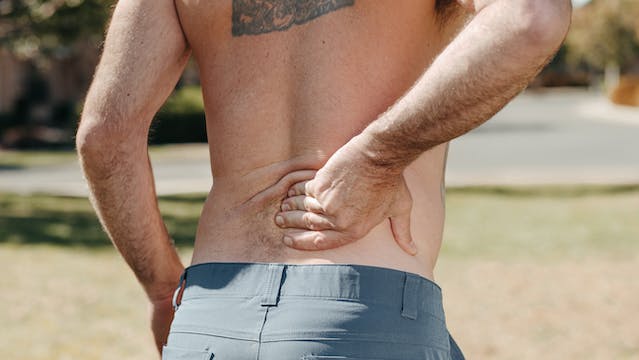The Vital Role of Physical Therapy in Treating Tendon Issues
Tendon issues, whether due to overuse, injury, or chronic conditions like tendinitis and tendinosis, can significantly impact daily life and mobility. In the realm of treatment options, physical therapy stands out as a crucial component in both recovery and prevention. Let's explore the evidence-based benefits of physical therapy for tendon issues.
Understanding Tendon Issues
Tendons are connective tissues that attach muscles to bones, allowing movement and stability in joints. When tendons become inflamed (tendinitis) or degenerate (tendinosis), activities such as walking, lifting, and even simple movements can become painful and limited.

Advancements in sports medicine and rehabilitation have underscored the effectiveness of physical therapy in treating tendon issues. Research supports the use of progressive loading exercises (eccentric exercises, for example) and tailored rehabilitation protocols to promote tendon healing and improve outcomes.
So while the main categories of management can be achieved by other providers, including manual techniques, biomechanical assessment and correction, and education, physical therapy is unique in the role it plays in strength and conditioning of the tissues. Proper exercise prescription, tailored to the specific needs and stage of recovery of the individual, are a cornerstone of physical therapy.
Evidence-Based Benefits of Physical Therapy and Exercise Prescription:
Inflamed or degenerative tendons benefit from loading: adding resistance on a specific tendon. Physical therapists will prescribe specific tendon loading exercises, often eccentric and progressive overload principles, to change the composition of the tendon and restore the function of its elastic fibers. This is crucial for preventing future injuries. Additionally, a biomechanical assessment to determine weak or imbalanced muscles in areas adjacent to the tendon issue will be important for avoiding recurrent injury. Exercise programs targeting specific, adjacent muscle groups to build strength, improve endurance, and enhance overall joint stability will also reduce stress at the tendons.
1. Eccentric Exercise:
Eccentric exercises involve lengthening the muscle-tendon unit under load. This type of exercise has shown promise in promoting tendon healing and improving function in various tendon-related conditions.
- Achilles Tendinopathy: Research published in the British Journal of Sports Medicine supports the use of eccentric loading exercises for Achilles tendinopathy. A study by Alfredson et al. demonstrated significant improvement in pain and function following a 12-week program of eccentric calf muscle exercises (1).
2. Progressive Overload:
Central to the effectiveness of tendon loading exercises is the principle of progressive overload. This approach involves gradually increasing the load on the tendon over time, stimulating tissue adaptation and enhancing tendon strength and resilience.
- Patellar Tendinopathy: A systematic review in Sports Medicine emphasized the effectiveness of progressive loading exercises for patellar tendinopathy. The review highlighted that tailored exercise programs focusing on progressive tendon loading can lead to improved clinical outcomes, including reduced pain and improved function (2).
3. Biomechanical Assessment and Corrective Techniques:
Physical therapists assess movement patterns and biomechanics to identify contributing factors to tendon issues. The concept of proximal strengthening (up the chain) in physical therapy refers to improving the strength and stability of muscles around the affected joint or tendon. This approach aims to optimize movement patterns and reduce strain on the tendon during functional activities.
- Rotator Cuff Tendinopathy: Research highlighted in the Journal of Orthopaedic & Sports Physical Therapy underscores the importance of proximal strengthening exercises for rotator cuff tendinopathy. Studies indicate that strengthening the scapular stabilizers and muscles around the shoulder joint can improve shoulder mechanics, thereby reducing the load on the rotator cuff tendons and enhancing functional outcomes (3).
- Patellar Tendinopathy: A study published in Physical Therapy in Sport investigated the effects of a rehabilitation program incorporating proximal strengthening exercises for patellar tendinopathy. The findings suggested that strengthening exercises targeting the hip abductors and extensors, alongside traditional knee-focused exercises, led to significant improvements in pain and function (4).
Conclusion
Physical therapy emerges as a cornerstone in the management of tendon issues, backed by evidence-based practices that include exercise prescription of varying techniques, biomechanical assessment, and patient education. By addressing pain, restoring function, and enhancing overall musculoskeletal strength and conditioning, physical therapists play a pivotal role in improving outcomes and quality of life for individuals with tendon problems.
For anyone dealing with tendon issues, seeking timely intervention from a qualified physical therapist can make a significant difference in recovery and long-term well-being. If you’re dealing with what you believe or have been told to be a tendon issue, come see us at Boulder Sports Clinic!
References:
- Alfredson, H., Pietilä, T., Jonsson, P., & Lorentzon, R. (1998). Heavy-load eccentric calf muscle training for the treatment of chronic Achilles tendinosis. American Journal of Sports Medicine, 26(3):360-6. doi: 10.1177/03635465980260030301.
- Malliaras, P., Barton, C. J., Reeves, N. D., Langberg, H., & Maffulli, N. (2013). Achilles and patellar tendinopathy loading programmes: A systematic review comparing clinical outcomes and identifying potential mechanisms for effectiveness. Sports Medicine, 43(4), 267-286. doi:10.1007/s40279-013-0019-z
- Struyf, F., Nijs, J., Meeusen, R., Roussel, N. A., Mottram, S., & Truijen, S. (2013). Clinical assessment of scapular positioning in patients with shoulder pain: State of the art. Journal of Manipulative and Physiological Therapeutics 30(1):69-75. doi: 10.1016/j.jmpt.2006.11.012.
- Kongsgaard, M., Kovanen, V., Aagaard, P., Doessing, S., Hansen, P., Laursen, A. H., ... & Kjaer, M. (2009). Corticosteroid injections, eccentric decline squat training and heavy slow resistance training in patellar tendinopathy. Scandinavian Journal of Medicine & Science in Sports, 19(6), 790-802. doi:10.1111/j.1600-0838.2009.00949.x
Related Posts

What is the Selective Functional Movement Assessment and how can it benefit me?

Why Your Sciatica Keeps Coming Back — And How to Fix It for Good

How to Fix Gluteal Tendinopathy in Runners
Experience the difference at Boulder Sports Clinic.
Contact us today to schedule an appointment and start your journey towards optimal health and peak performance. Still have questions? Call us now at (303) 444-5105

